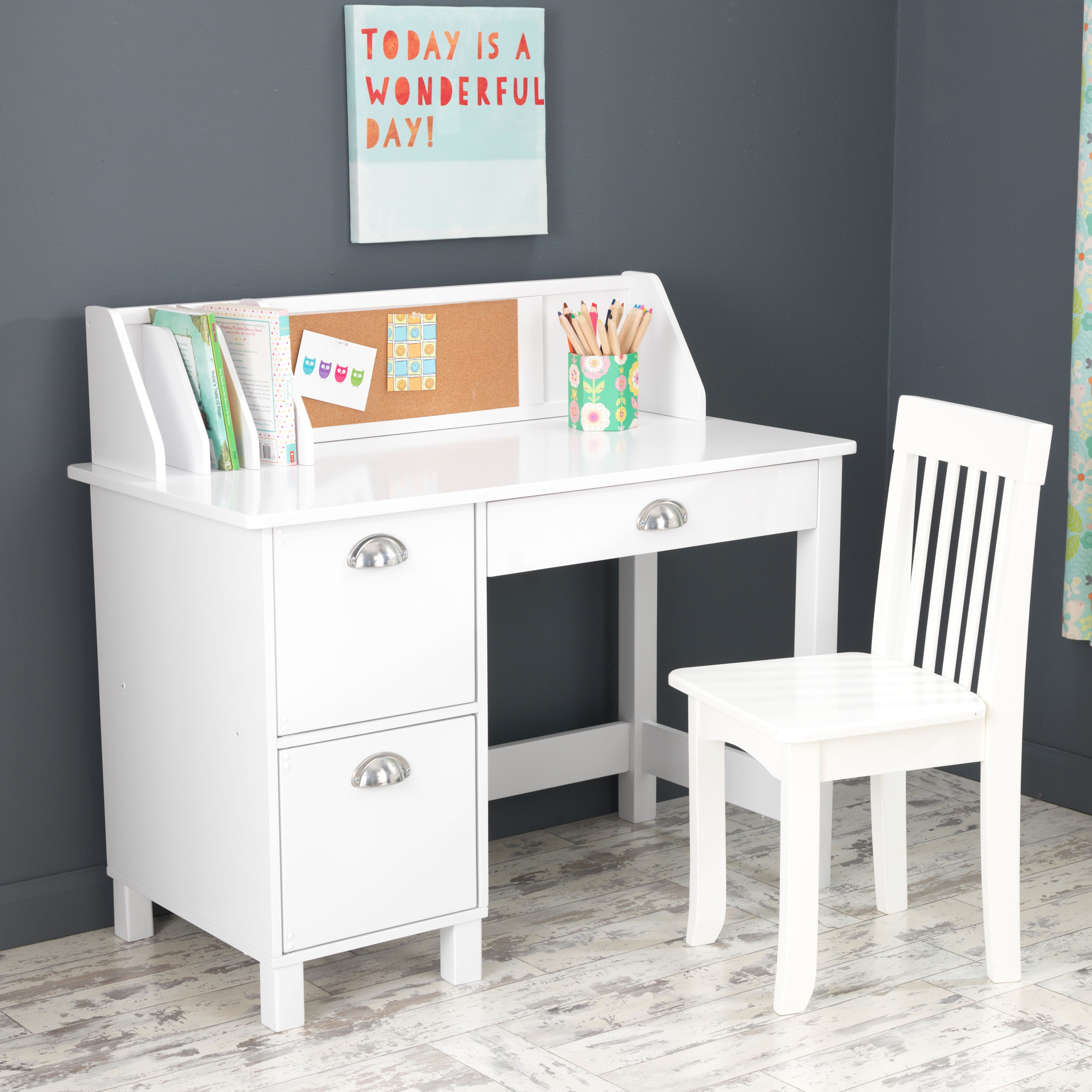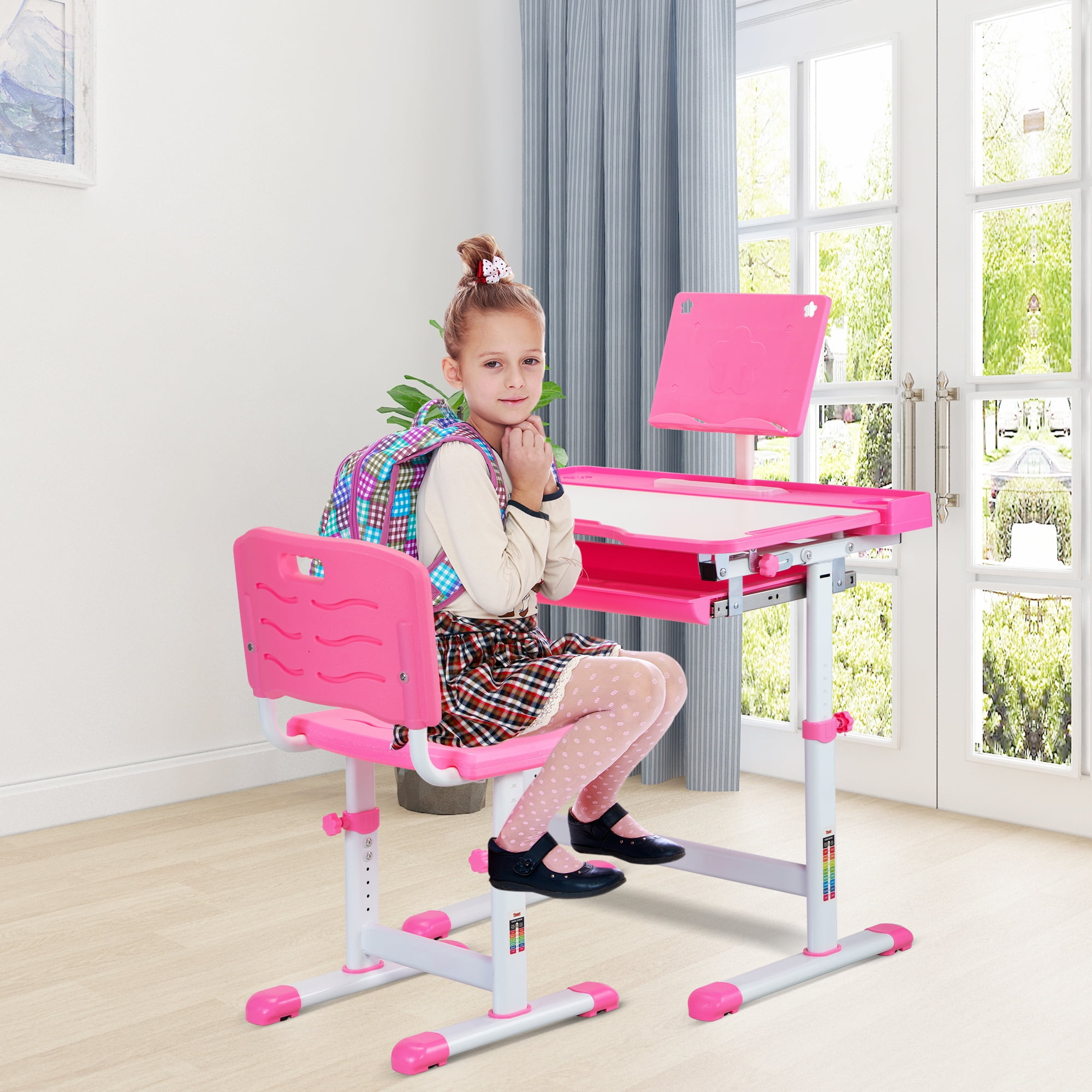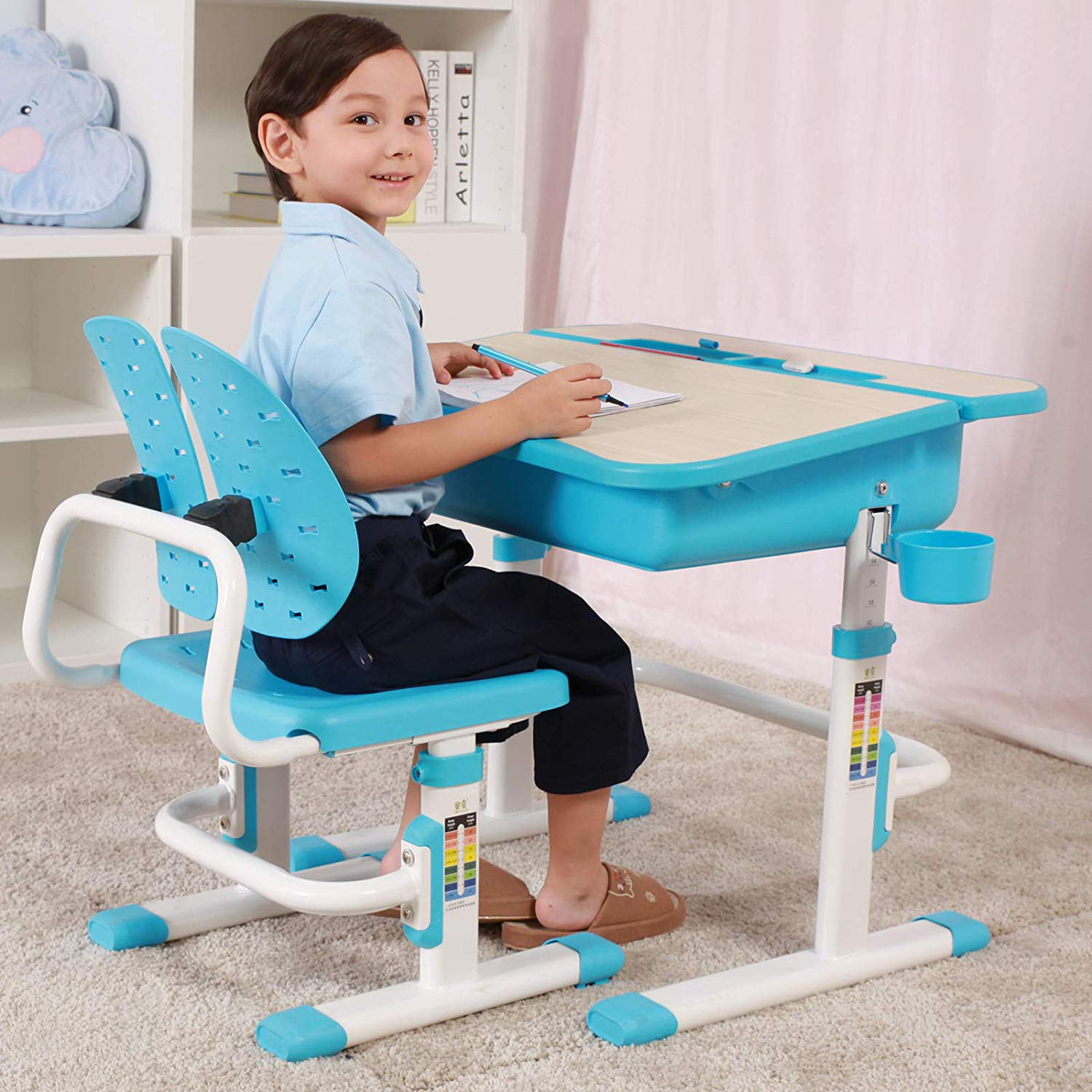Design Considerations for Kids’ Corner Desks and Chairs: Kids Corner Desk With Chair

Creating the perfect study space for children requires careful consideration of ergonomics, safety, and aesthetics. A well-designed desk and chair set can significantly impact a child’s posture, comfort, and overall learning experience. The following sections explore key design elements to consider when choosing or building a kids’ corner desk and chair.
Ergonomic Features for Children’s Desk and Chair Sets
Ergonomics plays a crucial role in ensuring a child’s comfort and preventing long-term postural problems. For preschoolers (ages 3-5), chairs should be low to the ground with good back support to encourage proper posture. Elementary school children (ages 6-12) need adjustable chairs that can grow with them, allowing for proper foot placement and support for their developing spines. Desks should be appropriately sized, allowing for comfortable elbow and wrist positioning while writing or drawing. Adjustable height desks are ideal, catering to different age groups and allowing for customization as children grow. The chair should support the natural curvature of the spine, promoting good posture and preventing back strain.
Materials for Kids’ Desks and Chairs
The choice of materials significantly impacts the durability, safety, and aesthetics of a child’s desk and chair. Wood is a classic and durable option, offering a natural aesthetic and good stability. However, it can be heavier and more expensive than other materials. Plastic is lightweight, affordable, and easy to clean, making it a practical choice for younger children. However, plastic desks and chairs may not be as durable as wood and can be less aesthetically pleasing. Metal frames can offer robust support, but sharp edges might pose a safety risk if not properly finished. A combination of materials, such as a wooden desk with a plastic chair, can offer a balance of durability, safety, and cost-effectiveness. Always prioritize materials that are non-toxic and free from harmful chemicals.
Comparison of Desk and Chair Designs
| Design | Height Adjustability | Storage | Style |
|---|---|---|---|
| Basic Wooden Desk & Chair Set | No | Minimal (small drawer) | Simple, traditional |
| Adjustable Height Desk & Chair | Yes | Built-in drawers or shelves | Modern, functional |
| L-Shaped Desk with Storage Unit | No | Extensive (drawers, shelves, cubbies) | Space-saving, organized |
| Plastic Desk & Chair Set | No | Limited or none | Colorful, playful |
Creative and Fun Design Elements
Incorporating creative and fun design elements can make a child’s desk and chair set more appealing and engaging. Bright, vibrant colors can stimulate creativity and add a playful touch. Unique shapes, such as rounded corners or whimsical designs, can make the furniture more visually interesting. Adding storage solutions in the form of built-in drawers, shelves, or cubbies can help keep the workspace organized and clutter-free. A chalkboard or whiteboard surface on the desk can provide a fun and interactive space for learning and creative expression. Thematic designs, such as a space-themed desk or a princess-themed chair, can further enhance the appeal and personalization of the workspace. Consider adding comfortable cushions or fun accessories, such as colorful pens and organizers, to complete the look.
Safety and Practicality for Kids’ Workspace

Creating a safe and practical workspace for children is crucial for their comfort, well-being, and productivity. It’s about more than just a desk and chair; it’s about fostering a positive learning environment that prioritizes both safety and functionality. This section will delve into the essential safety features, practical considerations, and a helpful checklist to guide you through the process of selecting the right desk and chair set for your child.
Safety Features in Kids’ Desks and Chairs, Kids corner desk with chair
Safety should be the paramount concern when choosing a child’s desk and chair. Sharp corners and edges pose a significant risk of injury, especially for younger children. Therefore, desks and chairs with rounded edges and smooth surfaces are essential. Stability is equally important; a wobbly desk or chair can lead to falls and injuries. Look for sturdy construction with a wide base for optimal stability. Finally, the materials used in the manufacturing process should be non-toxic and free from harmful chemicals. This includes the paints, finishes, and any other components that might come into contact with the child. Choosing furniture made from sustainable and eco-friendly materials is an added bonus.
Practical Aspects: Storage and Organization
A well-organized workspace promotes concentration and reduces clutter. Integrated storage solutions can significantly enhance the practicality of a child’s desk and chair. Drawers, shelves, and compartments built into the desk provide convenient spaces for storing stationery, books, and other learning materials. Some chairs even incorporate storage compartments underneath the seat for additional storage. These integrated solutions not only help keep the workspace tidy but also teach children the importance of organization from a young age. This contributes to a more efficient and productive study environment.
Checklist for Choosing a Kids’ Desk and Chair Set
Before purchasing a kids’ desk and chair set, consider the following checklist:
- Rounded Edges and Smooth Surfaces: Ensure all edges and surfaces are smooth and rounded to prevent injuries.
- Stability: Check the stability of both the desk and chair. A wide base and sturdy construction are crucial.
- Non-Toxic Materials: Verify that all materials used are non-toxic and free from harmful chemicals.
- Ergonomic Design: Choose a chair that provides proper back support and adjustability to accommodate your child’s growth.
- Adjustable Height: The desk and chair should be adjustable to ensure proper posture and comfort as your child grows.
- Storage Solutions: Look for integrated storage solutions like drawers, shelves, or compartments.
- Durability: Select durable materials that can withstand daily use and last for several years.
- Easy to Clean: Choose materials that are easy to clean and maintain.
Innovative Cable Management Solutions
Managing cables and wires around a child’s desk can be a challenge. Untangled wires not only create a messy workspace but also present a tripping hazard. Here are some innovative solutions:
- Cable organizers: Use cable ties, clips, or sleeves to neatly bundle and organize cables.
- Cable trays: Install cable trays under the desk to keep cables hidden and out of reach.
- Wireless peripherals: Opt for wireless keyboards, mice, and other peripherals to minimize the number of cables.
- Power strips with surge protection: Use a power strip with surge protection to manage multiple devices and protect against power surges.
- Desk grommets: Desk grommets provide a clean and organized way to route cables through the desk surface.
Selecting and Maintaining a Kids’ Desk and Chair Set

Choosing the right desk and chair for your child is crucial for their comfort, posture, and overall learning experience. Getting the sizing right is key, as is understanding how to care for different materials to ensure their set lasts. This section will guide you through the process, making it simple and straightforward.
Desk and Chair Sizing Based on Age and Height
Finding the perfect fit is all about ensuring your child can sit comfortably and reach their work without straining. A chair that’s too low will force them to hunch, while a desk that’s too high will lead to shoulder strain. Use a measuring tape to get accurate measurements of your child’s height and sitting height. Many manufacturers provide detailed size charts for their desks and chairs, correlating age ranges with height and weight recommendations. For example, a child aged 6-8 might need a desk height around 24-26 inches and a chair with an appropriately sized seat and back support. Always err on the side of slightly too small rather than too large, as they can grow into it. Remember to consider the height of the work surface – it should allow for comfortable writing and reading without requiring your child to hunch or strain their neck.
Maintenance Procedures for Different Desk and Chair Materials
Different materials require different care. Here’s a quick guide:
Kids corner desk with chair – Wood: Regular dusting with a soft cloth is essential. For spills, wipe immediately with a damp cloth and mild soap. Avoid harsh chemicals or abrasive cleaners. Polishing occasionally will help maintain the finish.
Plastic: Plastic is generally easy to clean. Wipe with a damp cloth and mild soap. Avoid abrasive cleaners that could scratch the surface.
Metal: Metal desks and chairs may require occasional polishing to prevent rust. Use a metal polish specifically designed for the type of metal used in your furniture. Always wipe down the surface after use to prevent build-up of dust or grime.
Fabric Upholstery: Vacuum regularly to remove dust and debris. Spot clean spills immediately with a damp cloth and mild detergent. For tougher stains, consult the manufacturer’s cleaning instructions. Consider using protective covers to prolong the life of the fabric.
Assembling a Kids’ Desk and Chair Set
Assembling furniture can seem daunting, but with careful planning and attention to detail, it’s manageable. Always follow the manufacturer’s instructions precisely. Here’s a general guide:
- Lay out all parts and tools: Before you begin, carefully unpack all the pieces and check against the parts list in the instruction manual. Gather all the necessary tools – usually a screwdriver (Phillips head and flathead), a wrench, and possibly an Allen key.
- Start with the base: Typically, assembling the chair or desk base is the first step. Pay close attention to how the legs or supports connect to the frame. Ensure everything is aligned correctly before tightening any screws.
- Attach the remaining components: Once the base is secure, gradually add the other components according to the instructions. Take your time and double-check each connection before moving on.
- Tighten screws securely: Don’t overtighten screws, as this could strip the wood or damage the metal. Use even pressure to ensure a firm and stable connection.
- Check for stability: After assembly, thoroughly inspect the desk and chair for stability. Gently rock the chair and check that the desk is sturdy and doesn’t wobble.
- Address challenges: If you encounter difficulties, consult the manufacturer’s instructions or their customer service. Sometimes a small detail can make a big difference. Don’t be afraid to ask for help if needed.
